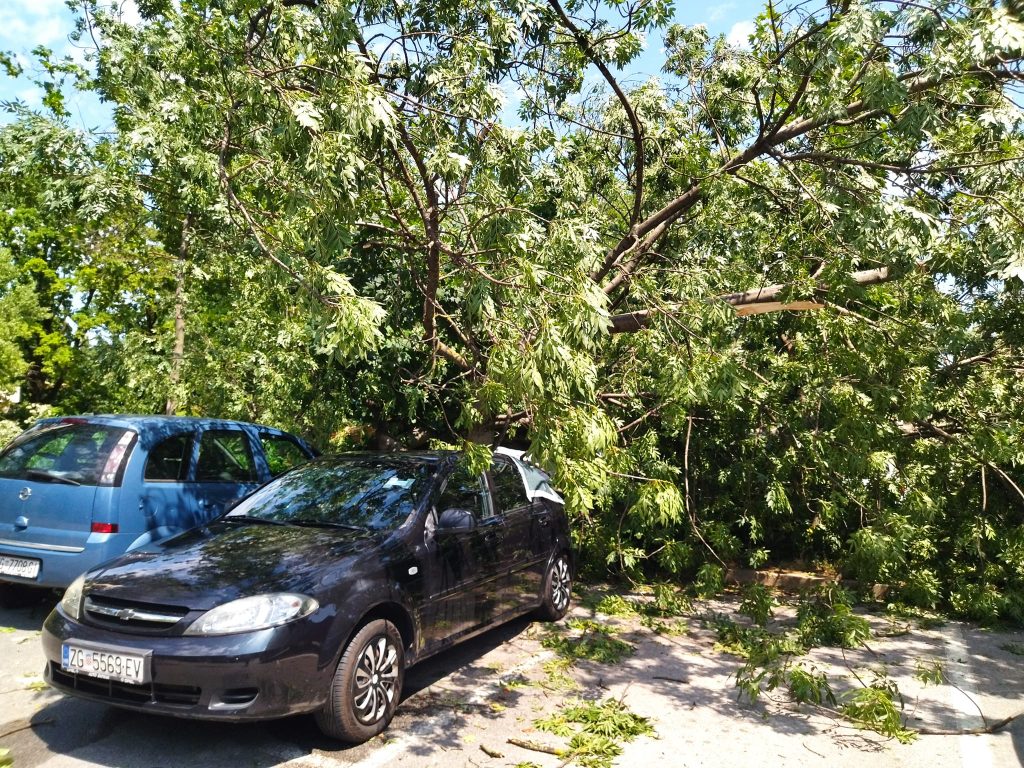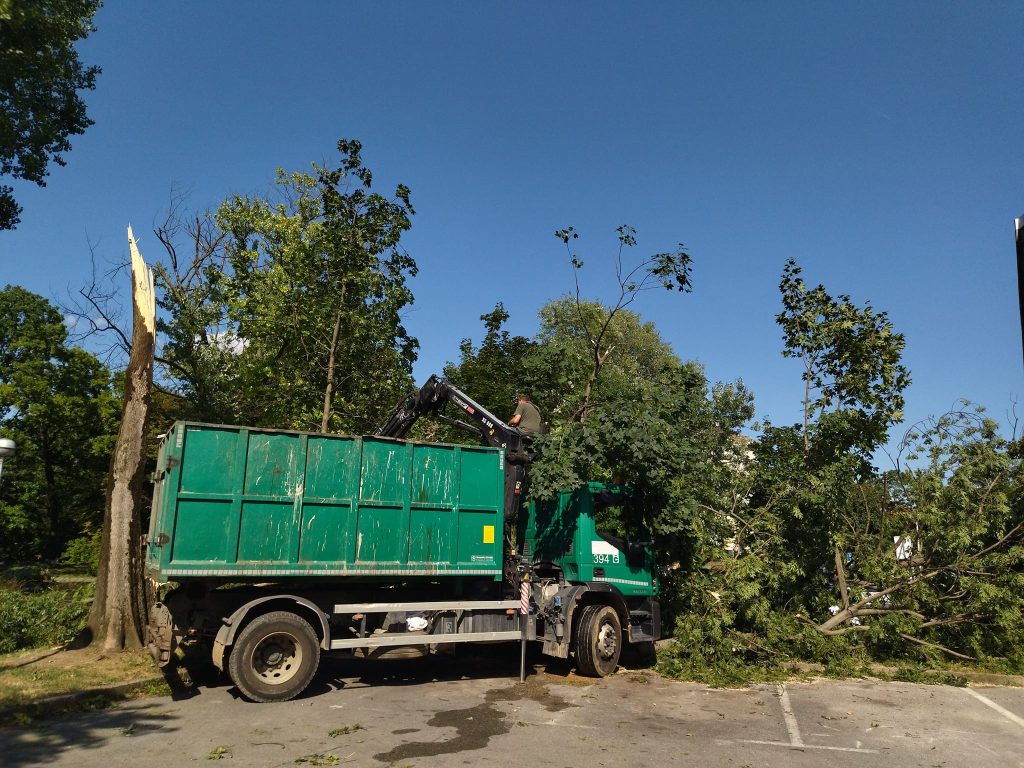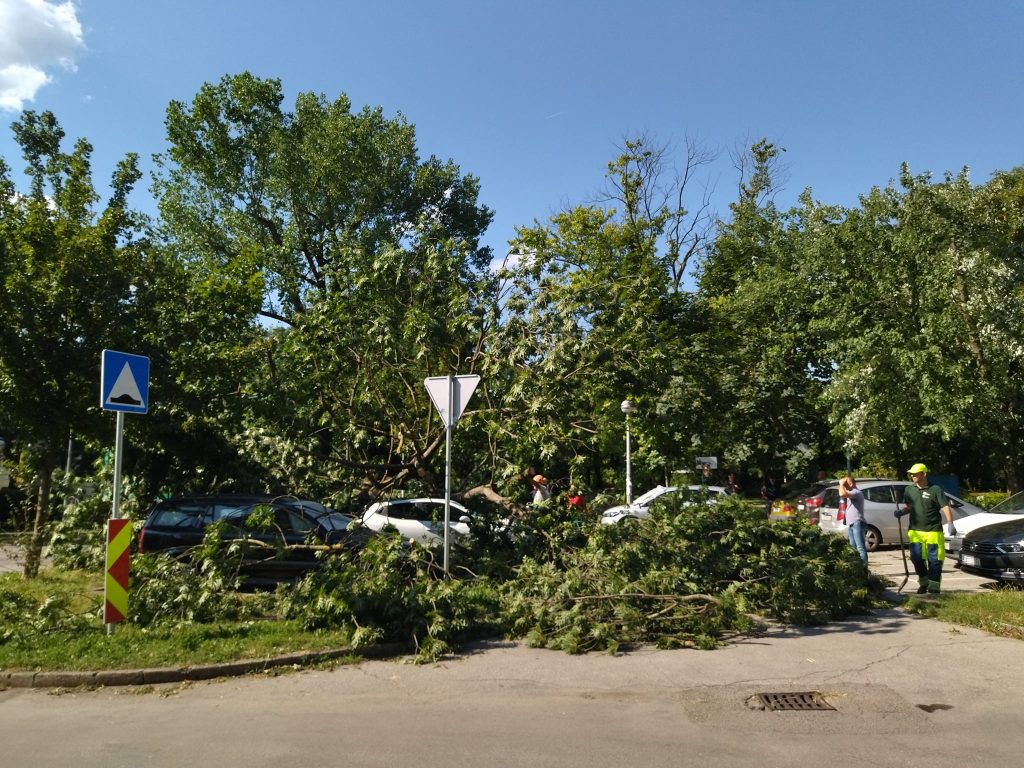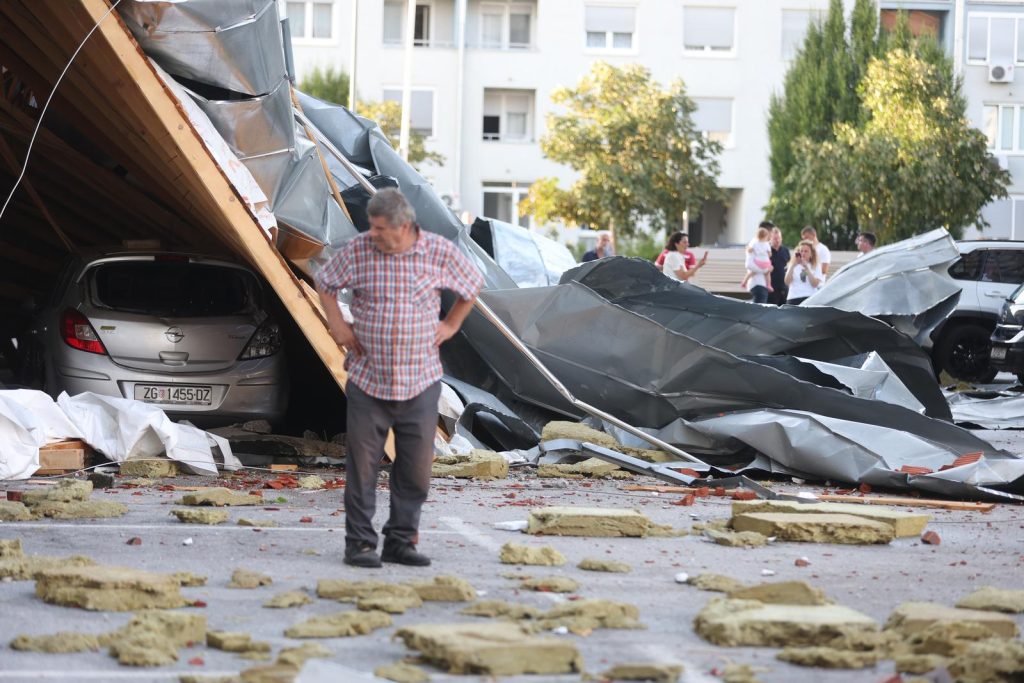July the 21st, 2023 – This week in Croatian politics has been dominated by just one thing – the horrific Zagreb storm which took multiple lives and caused enormous damage.
Many feel the state didn’t do enough to warn the public of the imminent danger posed by the storm
The Zagreb storm which struck us in the capital, took several lives and caused damage across 14 counties was utterly devastating. Speaking as someone who experienced it from their 18th floor apartment close to Central Zagreb, I can honestly say it was frightening. I’d never felt my building sway like that other than during earthquakes, which, in fairness aren’t the most desirable “act of God” either. I digress, the storm was unlike any I had ever witnessed before, and I’ve lived in Dalmatia which is famous at certain times of year for its violent winds, rain and sheet lightning. Nothing comes close to what arrived in Zagreb from strange and disturbingly yellow skies on the evening of the 19th of July.
Have a watch of my video of the Zagreb storm, filmed from the 18th floor, looking towards the centre
Many people have had a lot to say about the lack of timely warning of the arrival of said impending doom from the powers that be, especially given the fact that an alert service system from the Civil Protection Directorate does exist, and it cost an arm an a leg to create (for some reason).
As Ilko Cimic/Index writes, the SRUUK (Early Warning and Crisis Management System) for which a massive 8.3 million euros was paid out is still not fully functional. Interior Minister Davor Božinović revealed this after people were rightfully livid that nobody received a warning that the devastating storm, which eventually claimed (at the time of writing) 4 lives and caused damage across 14 counties, was approaching Croatia.
An orange warning isn’t enough to send out text messages, claims Damir Trut
The admission that the system was not working was preceded the statement of Damir Trut, the director of the Civil Protection Directorate, who, when asked why SRUUK didn’t send a warning out en masse to people’s phones, said that an orange warning had been issued for the approaching Zagreb storm and that they acted in accordance with all regulations of orange warnings. In response to Index’s query, the State Hydrometeorological Association (DHMZ) denied that statement, claiming that on July the 19th, after 15:00, the warning was raised to the highest level there is – red.
In a government document from back in April, the release of this warning system was announced for June this year. However, this is not the only deception related to SRUUK. Namely, according to the government document from April of this year, the Report on the Implementation of the National Reform Programme, it is stated that the early warning and crisis management system had been implemented and that the plan was for it to be “put into production” in June of this year.
Moreover, on the official website of Civil Protection Directorate, it is stated that the sending of these test SMS messages was set to begin on June the 3rd, 2023, which is what happened, as well as that “after the initial testing phase, messages will be sent out in case of danger and at least once a year to check the functionality of the system”.

EU countries are obliged to have warning systems for public protection in place
The basis of this entire project is the EU Directive on the European Code of Electronic Communications from 2018, according to which all EU member states are obliged to establish a public warning system for public protection within their countries, which should have been in force by June the 21st last year.
Let’s emphasise once again, the system did not work on the 19th of July as the Zagreb storm loomed, and Minister Božinović revealed that they still haven’t passed all the regulations. He also stated there are technical difficulties being experienced, and the question is when the system will be in operation at all.
Huge price tags for a system that isn’t yet functional
The financing of the early warning system amounted to an enormous 63 million kuna, of which 53.5 million kuna was provided by grants from the European Union from the European Fund for Regional Development.
SRUUK, the System for Early Warning and Crisis Management, was designed as a unique tool that would quickly and efficiently inform people about threats and measures that need to be taken to reduce human casualties and material damage through messages sent to mobile phones.
The system is designed so that the residents of a certain area of Croatia, as well as its visitors, at a certain moment of crisis, receive a warning message to their mobile devices about extraordinary events in that area. These events must represent a potential danger to human life and health, material goods or the environment, such as natural disasters and disasters, major accidents, epidemics or other types of crises. Along with the notification of the dangers that threaten us, the message should also contain the measures that need to be taken urgently, in order to reduce the negative consequences to a minimum.
Back in 2020, the Directorate of Civil Protection signed an agreement with Croatian mobile operators that provided technical support for the project and access to the data of mobile phone users in the crisis-affected area(s) of Croatia.
The basis for the entire project is, as stated above, the EU Directive on the European Code of Electronic Communications from back in 2018. That directive clearly states that it is possible to publish a security incident, if it is in the interest of the public, and that the competent authority can inform the public about it or ask the providers (mobile operators) to do so.
Croatia began implementing this directive over three years ago
Croatia started implementing this directive over three years ago, contracts were signed and a public tender was announced, where the implementation of the Early Warning and Crisis Management System was awarded to a consortium consisting of King ICT, GDi and the French company Intersec.
By law, operators had to adapt to SRUUK by the end of last year
The law was also changed, and Article 156, (about the public warning system) was added to the Electronic Communications Act, according to which operators must “at the request of the competent authority, deliver public warnings to end users about immediate or impending danger via the public warning system, free of charge.”
Article 180 of that law states that if a public warning system has been established, operators must start implementing that system no later than December the 31st, 2022. The system was established this year, and was tested on June the 3rd. At that time, it was determined that about 80 percent of the public had received a warning on their phones, and the Ministry of the Interior then announced that the testing had been successful.

Civil protection: The Zagreb storm warning was orange
After the majority of the public were angry that they didn’t receive a warning about the Zagreb storm, Damir Trut, the director of the Civil Protection Directorate, appeared to blame the DHMZ for this, claiming that the warning level for the approaching Zagreb storm was orange, and that the regulations for orange warnings were stuck to.
“We acted in accordance with all of the regulations for orange warnings,” he stated.
DHMZ: No, the Zagreb storm warning was red
Naturally, DHMZ was asked if this was true. According to them, it isn’t. The warning for the Zagreb storm was red.
“During the approach of that weather system from Italy via Slovenia, the warning level was raised to the highest level of red on July the 19th after 15:00.” DHMZ clearly stated, which is in direct contradiction to Director Trut’s statement about it having been orange.
Have another 18th floor video of the storm…
As the powers that be continue arguing over the colours orange and red, feast your eyes on another video taken from my 18th floor view. This video looks down towards Savska cesta as the steam from the intense heat we’d been experiencing until the Zagreb storm struck is released from the facade of the building, appearing like smoke.
How is this system supposed to function when weather threats are in question?
The plan for crisis situations involving dangerous weather systems envisages cooperation and coordination between the DHMZ and the Operational Centre for Civil Protection (OCCZ) using the Standard Operating Procedure (SOP) for the use of DHMZ weather forecasts.
According to this protocol, the Department for Weather and Maritime Analysis and Forecasts delivers regular and special weather forecasts for the entire country and individual areas, as well as, if necessary, the judgements of forecasters on duty at any time of the day and warnings of dangerous weather phenomena. According to that protocol, the Civil Protection Directorate had to receive a notification about the approaching Zagreb storm after 15:00.
As a quick reminder, the Civil Protection Directorate claims that they had a report that the warning was orange, while DHMZ claims that it was red after 15:00, so it remains to be seen who exactly violated the protocol.
Work is now underway to clean up after the Zagreb storm
Work across the city is now underway to remove fallen trees, collect rubbish from bins that were made airborne, and deal with the issue of crushed cars and other material damage on roofs etc.


The Zagreb storm has claimed lives
Natural disasters are precisely that – disasters. Nobody can be blamed for them and that is likely part of what makes them so terrifying. Mother Nature has a way of repeatedly showing us how powerless we actually are, and in such situations, lives are tragically lost. Multiple people died as a direct result of the Zagreb storm, and it is only natural that their friends and families, not to mention the wider general public, will want answers as to why warnings were not sent, and lives which are now lost were not saved.










